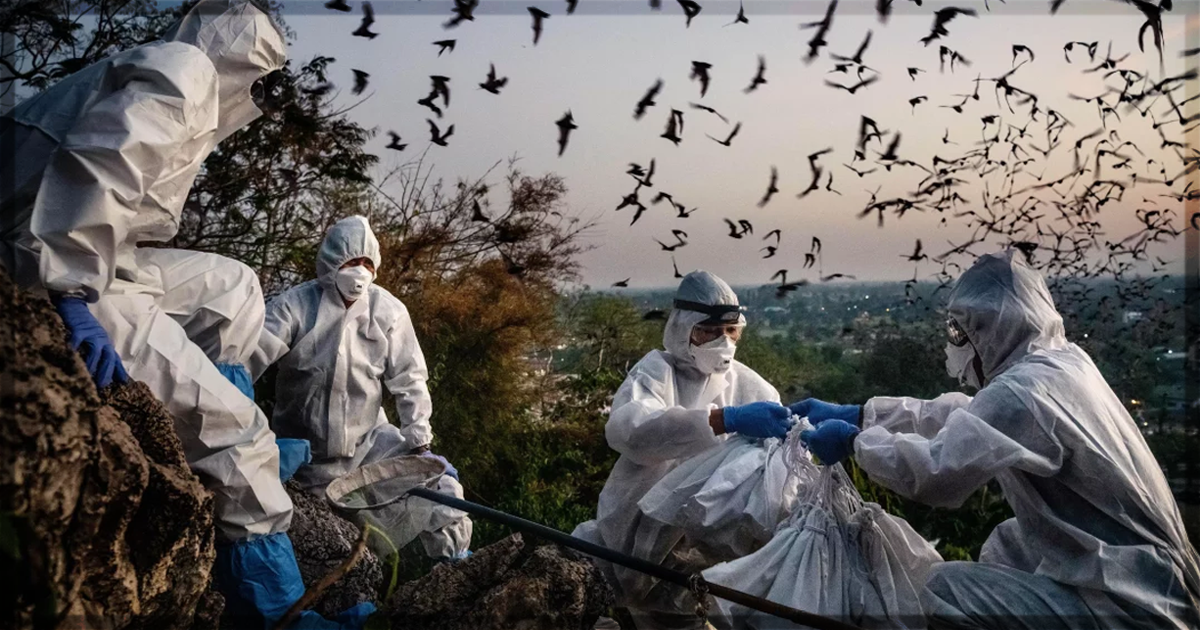There are moments in human history that become monumental marks of passage. They shift the years to come and how humanity reacts to the world around it. However, the stubborn characteristics of the individuals ignore warnings that may protect them from a grander danger. In Blame, Christian Frei covers a trio of scientists and their works on the SARS virus. In 2003, it became the first epidemic of the century, starting its spread in Hong Kong. A group of researchers in the biology field assembled to study what animal could be its vector. Linfa Wang, Zhengli Shi, and Peter Daszak, scholars of zoology and biology, studied the probability of SARS coming from bats in a Chinese cave. Their article, which Science Magazine, the most renowned in the world, published, proved the relationship between the virus and the animal.
More significant than peer recognition, they used their spotlight to warn in their work how the constant changes in the environment in our modern world could lead to new mass dissemination. Only six years after the article’s publishing, the contamination of an unknown disease from a wildlife market would shock and worry the globe. A few months later, the world would lock down and conduct research to discover COVID-19’s intricacies and how to combat it. The director, Christian Frei, aims to give the scientists’ perspectives on what the world has done wrong about the pandemic. However, his approach to platform the trio involves direct participation in front and off the cameras. Frei narrates the film in a pedagogical writing that constantly lectures the audience on the scientific process. He treats the viewer as unable to comprehend the laboratory language. Instead of using cinematic tools to amplify his reach for his thesis on misinformation and anti-intellectualism, Frei draws his logical thoughts on the screen.
It is notable that the caution he exercises to explain appropriately his belief. Frei analyzes at the poor quality of journalistic work in the twenty-first century and how the internet makes misinformation simpler to spread. A crucial element of the argumentation is Donald Trump’s role in ignoring the gravity of the situation and defunding the trio’s research grant. Indeed, it is a populist policy to cancel a fund based only on the fact it funds a laboratory in China, precisely in Wuhan, where Shi lives and where it all started. Yet, the constant participation of the director in a film that sells itself as the perspective of an unheard group is not cohesive. As Kristen Johnson mentions in her camera person postulates, an article establishing the relationship between directors and subjects, the filmmaker creates unimaginable connections with their subjects. Still, sometimes the director confuses their history with their own, and Frei does it in Blame.
The central conflict in how the Chinese government and population treated Shi during the pandemic is gripping. She traced the bat’s genome that killed miners, the same as the COVID-19 genetic code. She would be accused of omitting public information of the highest order and would get in trouble. She could not leave the country for a health conference in Singapore, where Frei met the other two researchers. These situations involve the audience in crises that most people would not know about. The far-right hijacked the narrative surrounding the origin of the virus through Trump’s former counselor, Steve Bannon. Anti-Chinese researchers in Hong Kong would get the spotlight to tell the hidden truth of the “Chinese Virus” – a disease created by the Communist Chinese Party to destroy the United States.
The engaging moments corresponding to the science and how the political game worked get lost in the childhood of each trio member and how they would transform into who they are today. Besides the contextual importance of the segment, it breaks the rhythm of the conspiracy and paranoia film that Frei attempts to make with Blame. There is an inconsistency in what films the director wants to deliver. One is the look on the scientists and their visions. The other is his view on their warning to the world and how misinformation harms the world. In both films, there are intriguing moments and constructions of a hypothesis.
Frei gets lost in the middle of it. It is a film that is undecided about what it wants to achieve. Somewhere in the mixture of both visions, we have a paranoid documentary about the dangers of unregulated free speech. The final result, unfortunately, is different from that. Blame is a film that finds its best moments in scientific intrigue and a political game behind every major invention, research, and article. It has moments of fascinating discoveries, but its development limits it from fulfilling its intentions.


